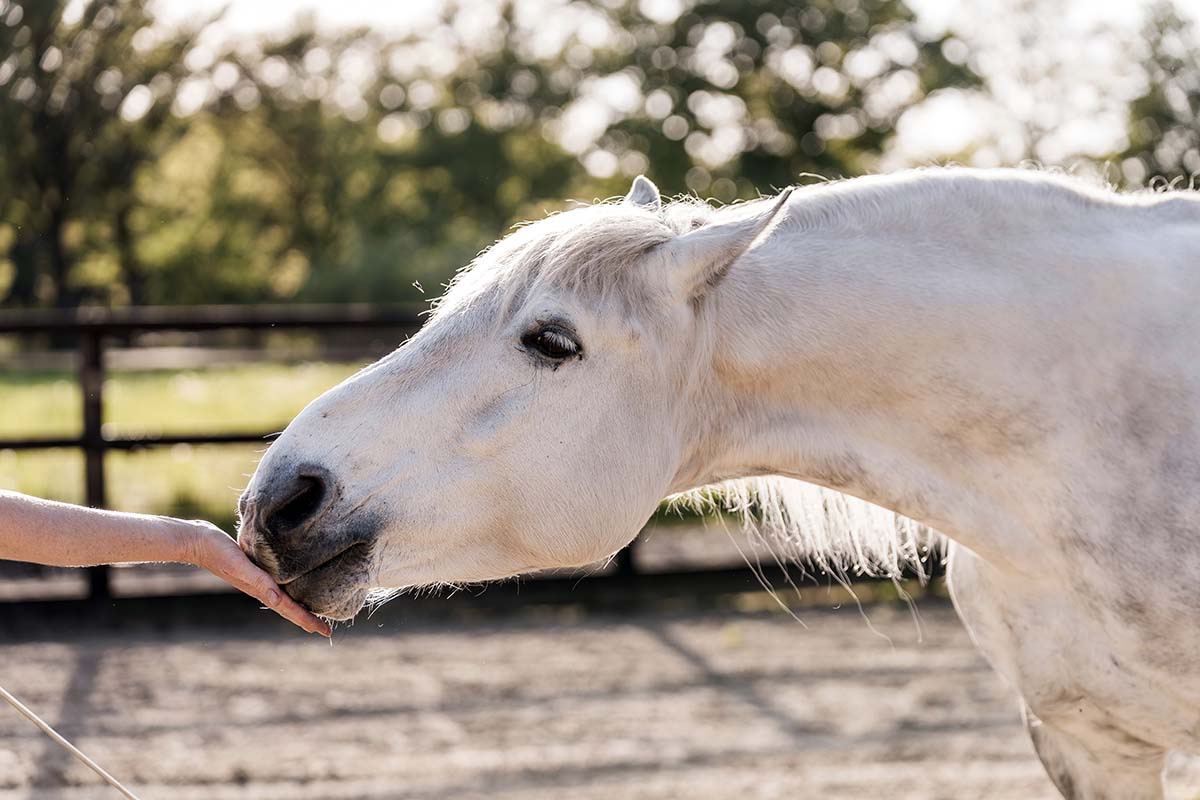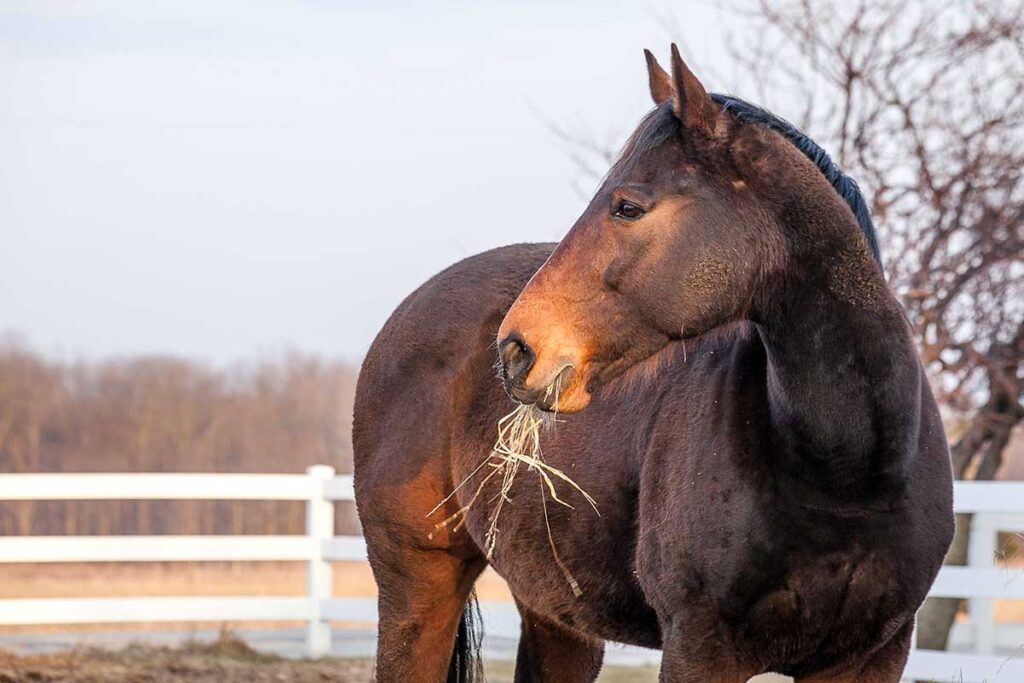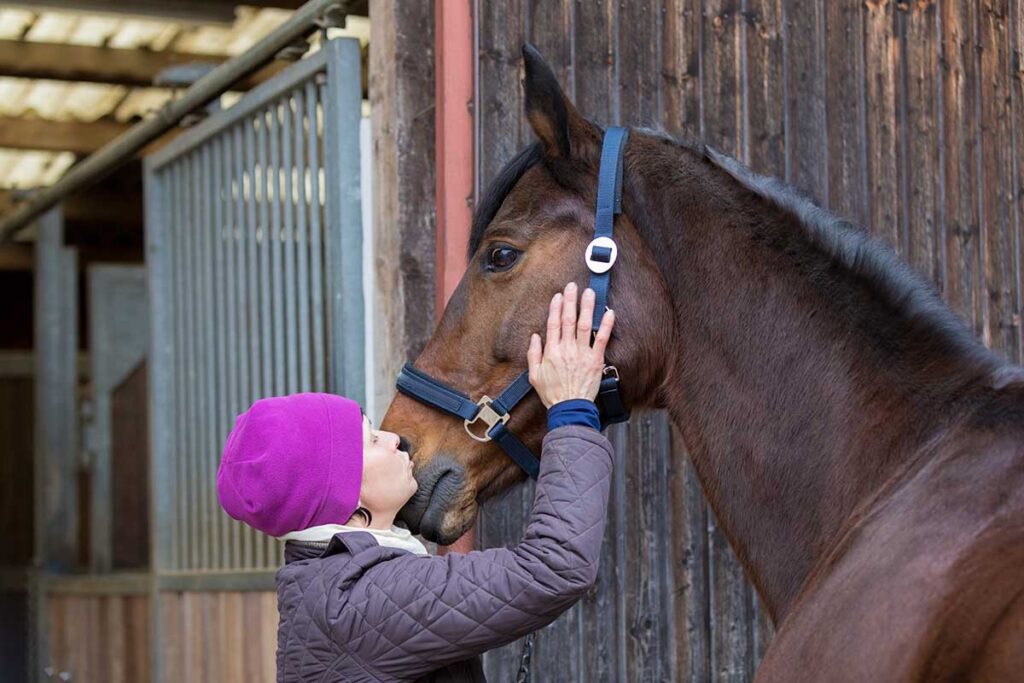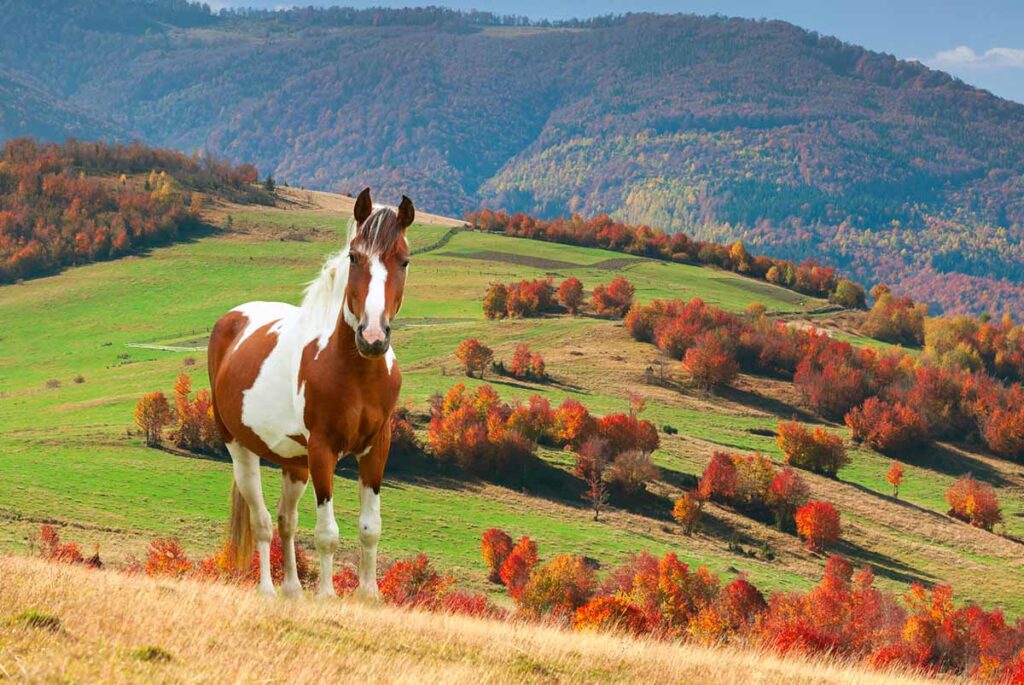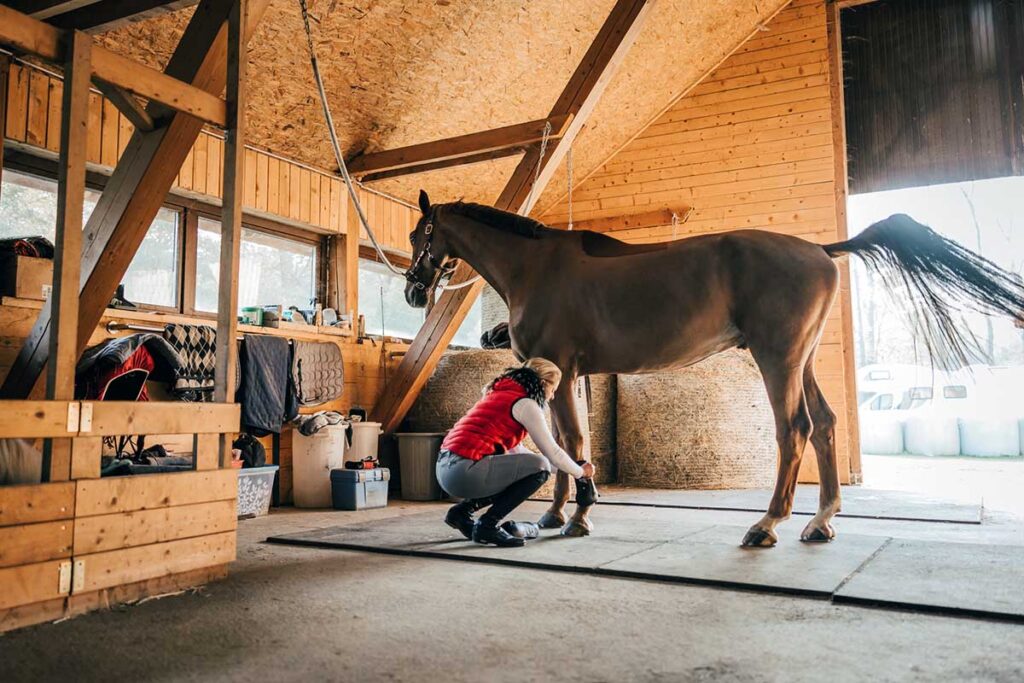Food is a primary reinforcer—something all animals instinctively desire because they need it for survival. This quality makes it a valuable tool in our horse training toolbox.
The topic of using treats to train horses is a hot one. Some swear it creates “cookie monsters,” while others feel that it should be the only way to train. This strong division in opinion makes it all the more important to separate facts from fiction. Having a basic understanding of what positive reinforcement is and how to get started will put you on the path to harnessing this training technique while avoiding common pitfalls.
Simple Cause and Effect
Consequences can affect behavior. Giving a treat immediately after a horse does a desired behavior can increase the likelihood the horse will perform that same behavior in similar conditions in the future. The horse learns that their voluntary behavior predicts the delivery of treats. It happens again because it has been positively reinforced.
When using consequences to shape behavior, it’s critical that we get the timing just right between the behavior and the consequence. This is important because, unlike humans, horses don’t have the cognitive ability to link their behavior with consequences that happen more than a few seconds later.
While this approach can be useful for teaching some behaviors, we might quickly run into situations where we cannot give the treat right after the behavior occurs. This is where using a secondary reinforcer can help us further.
‘‘Yes, that’s exactly what I wanted you to do, please stand by for a treat!’
A secondary reinforcer is something that previously didn’t have meaning to the horse but acquires meaning after conditioning (learning). For example, a tongue cluck initially means nothing to a horse. But if we tongue cluck and then immediately give the horse a small treat several times in a row, the horse will form an involuntary association: A tongue cluck sound predicts a treat. Once this conditioning happens, we can use a tongue cluck as both a “marker” and a “bridge.” It tells the horse that what they just did was a desired behavior and to stand by for a treat delivery.
When used with skill and excellent timing, a secondary reinforcer can make training with treats much more precise. We can mark exact behaviors and increase the likelihood the horse will repeat them when cued again in the future. As it also allows us a bridge of time between the moment the behavior occurred and when the treat arrives. This makes it more practical to train behaviors where we can’t immediately and logistically deliver treats, such as during a flying lead change, simply because of what we are doing with the horse in that moment.
You might know this as clicker training, because some trainers employ a small handheld “clicker” as their marker. You don’t need a clicker, but whatever marker you use, it must be consistent every time you use it to avoid confusing your horse.
The Appearance of a Mild Stressor Predicts Treats
When I’m helping clients whose horses have developed strong fears of things like needles or the farrier, I might use an “open bar/closed bar” technique. In short, immediately after the stressor appears at a low enough level of exposure to not cause distress, the “bar is open” and treats are trickle-fed continuously to the horse. After a brief “open bar” exposure to the stressor, it’s removed and the “bar is closed” (treats stop).
While this highly effective technique might appear deceptively simple at first glance, it isn’t always easy to implement for fear-based issues without professional guidance. If your horse struggles with such a fear, consider contacting a professional who uses techniques like “open bar/closed bar” to help your horse.
Summary
You can’t learn all you should know about using positive reinforcement to train from a short online article. But hopefully, we’ve piqued your curiosity for using this powerful tool. Finding a qualified and experienced positive reinforcement trainer will get you and your horse off to the best start while minimizing the likelihood of creating a cookie monster through improper use.
Related Reading:
- Teach Your Horse Good Ground Manners When Leading
- How To Train Your Horse to Tolerate Fly Spray
- Understanding the Basics of How Horses Learn
Lauren Fraser, MSc, FFCP, has helped people understand horse behavior problems since 2006. With a background working as a horse trainer, an MSc in clinical animal behavior, and more than a decade working as an equine behavior consultant, Lauren’s approach gets to the heart of why horses behave the way they do and addresses issues using low-stress methods. Lauren also guest lectures at universities, presents at conferences, and creates educational programs for horse owners and equine professionals.
Are you enjoying this content? Sign up for My New Horse’s FREE newsletter to get the latest horse owner info and fun facts delivered straight to your inbox!

